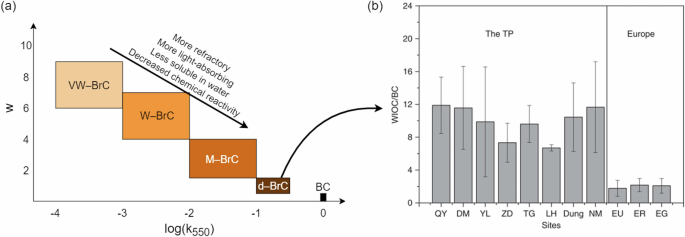2024-09-04 ワシントン大学セントルイス校
<関連情報>
- https://source.washu.edu/2024/09/washu-scientists-uncover-hidden-source-of-snow-melt-dark-brown-carbon/
- https://www.nature.com/articles/s41612-024-00738-7
山火事による暗褐色炭素:強力な雪の放射強制力物質か? Dark brown carbon from wildfires: a potent snow radiative forcing agent?
Ganesh S. Chelluboyina,Taveen S. Kapoor & Rajan K. Chakrabarty
npj Climate and Atmospheric Science Published:28 August 2024
DOI:https://doi.org/10.1038/s41612-024-00738-7

Abstract
Deposition of wildfire smoke on snow contributes to its darkening and accelerated snowmelt. Recent field studies have identified dark brown carbon (d-BrC) to contribute 50–75% of shortwave absorption in wildfire smoke. d-BrC is a distinct class of water-insoluble, light-absorbing organic carbon that co-exists in abundance with black carbon (BC) in snow across the world. However, the importance of d-BrC as a snow warming agent relative to BC remains unexplored. We address this gap using aerosol-snow radiative transfer calculations on datasets from laboratory and field measurement. We show d-BrC increases the annual mean snow radiative forcing between 0.6 and 17.9 W m−2, corresponding to different wildfire smoke deposition scenarios. This is a 1.6 to 2.1-fold enhancement when compared with BC-only deposition on snow. This study suggests d-BrC is an important contributor to snowmelt in midlatitude glaciers, where ~40% of the world’s glacier surface area resides.


